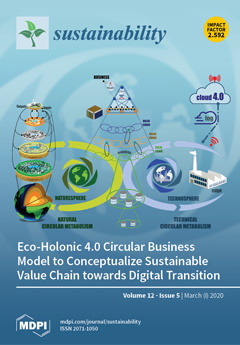
HU – Accessibility and Transportation Equity
Anzhelika Antipova, Salima Sultana, Yujie Hu, & James P. Rhudy, Jr.
Article first published online: 30 APR 2020 Sustainability
DOI: 10.3390/su12093611
ABSTRACT: It is an honor to write an Editorial to this Special Issue (SI) of Sustainability. The SI addresses aspects of accessibility and equity and provides lessons from studies in various settings including the United States, China, Sweden, Poland, Peru, and Portugal to name a few, which collectively can contribute to a more sustainable and equitable transportation globally.
Accessibility is strongly tied to policymaking and thus has been extensively studied in a number of disciplines including transportation, geography, and urban planning. Accessibility can be defined in a variety of ways, recognizing influence by physical, political, economic, and social factors. It measures, for example, the potential of various opportunities for interaction, and the relative ease for people in an area to reach opportunities [1]. Various forms of accessibility are closely interdependent including transport availability and connectivity, communication, spatial, social, economic, physical, and temporal accessibility; thus, many novel measures are often taken to study different aspects and conceptualizations of accessibility. For example, as Moscicka et al. (2019) in this SI note, data from mobile phones can be used to study resident mobility, GPS-based location systems provide data on urban vehicle traffic, and the OpenStreetMap-based geospatial data are useful in research on urban public transportation networks, bicycle trails, as well as for studies on the availability of transportation for people with mobility restrictions. Additionally, Google Maps can provide an accurate measurement of travel times for different travel modes for various times of the day.
In this introduction to the Special Issue of Sustainability on accessibility and equity in transportation, we attempt to synthesize key lessons from the issue’s fifteen substantive articles. These involve accessibility-related lessons including accessibility improvement in railways; optimizations of cross-border road accessibility, intercity networks, and pedestrian access to public transportation; as well as various aspects in urban transportation planning such as urban mobility, integration of bike-sharing, and electronically powered personal mobility vehicles. Other lessons cover equity-related aspects of transportation including the provision of the maximally full information to underserved populations to lessen the burden of unequitable access to urban facilities, ensuring socially equitable transportation planning and reducing burdens in commuting cost among low-income commuters. Finally, remaining lessons link equity back to accessibility with discussions on accessibility to public transport for disabled as well as visually impaired people, and equitable job access by poor commuters.
Read the full publication at Sustainability.